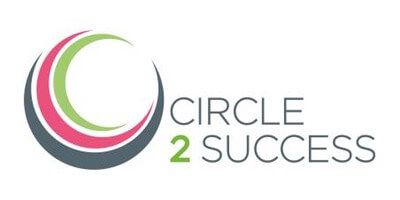
2022 was a year to choose leadership. Leaders were tested in a multitude of ways. The great resignation, a return to the office, a global fear of a recession, the start of workplace layoffs, and the cost of living skyrocketing with inflation are just the beginning of the list. It was so challenging that some leaders walked away from the responsibility altogether.
As bleak as that might sound, it’s critical to remember:
Only leaders who are tested become great.
It’s often the challenge that changes us. It’s tests and adversity that make us better professionals and leaders.
It’s finally 2023, which means a new round of leadership ideas, predictions, and trends. Last year’s predictions aged reasonably well, such as the coaching rage infiltrating organizations and overall less tolerance for average. Others, not so much, such as character counts again.
With that in mind, here are four ideas every leader should know moving into 2023.
1. Burnout Remains or Increases
Many organizations have begun the restructuring process of leaning out and laying off staff. Outsourcing roles and responsibilities that are repetitive has become the norm. While sensible from an economic standpoint, the remaining team members will naturally have to do more with less.
Since professionals are fearful about their employment and the potential global recessions, they will white knuckle and endure the increased workload. According to recent research, 77% of employees have experienced feelings of burnout at their current job. However, 21% of workers say their company does not offer any program to help alleviate burnout.
The best way to combat burnout is to remember the deeper purpose behind the work.
Key Takeaway: The best way to combat burnout is to constantly remind your team of the deeper purpose behind their work.
2. The Demand for 9-5 Monday – Friday Gets Challenged
In-person and in-office work is back to being the norm for most organizations. Whether you agree with it or not, every leader, regardless of their role, must challenge their beliefs about the traditional 9-5 Monday through Friday in the office.
Preliminary results from a Global 4-Day Workweek study have shown “resounding success,” with revenue and productivity not taking a hit. While some industries like hospitality, logistics, or manufacturing require more of a 24/7 schedule, most leaders should challenge their thinking about the traditional 9-5 Monday-Friday model.
Most leaders should challenge their thinking about the traditional 9-5 Monday-Friday model.
Key Takeaway: Encourage team members to work when and where they work best. Leverage the time in-person or in the office to innovate, collaborate, and fuel relationship building.
3. Career Sabbaticals and Unplugged Time Off Emerge
Companies will leverage paid sabbaticals to combat burnout and reward committed team members who choose excellence over time. For some team members in large organizations, this might be the norm, but for leaders in small to medium size businesses, this has never been on the table.
While every organization might not activate the career sabbatical approach in short order, the required “unplugged time off” will become the norm. Forcing team members to reset, refresh, to come back refocused.
Part of a leader’s job is to root out complacency.
Key Takeaway: Whether your organization creates policies around this, every leader must consider making unplugged time off for their team members. Not only is it essential for mental health and combatting burnout, but it helps root out complacency.
4. Personal Development Infiltrates Professional Development
The majority of organizations have some form of Learning and Development approach to transfer knowledge and develop skills. Thus allowing employees to do their job better and more efficiently.
However, the boom of the personal development space and knowledge transfer being more easily accessible through media on mobile devices has blended personal and professional development. Sign up for the Free Catalyst for Growth Summit.
Organizations and leaders have taken notice and added personal development programs to their curriculum to help employees change their mindsets and clarify their goals. This approach has been proven to reduce voluntary turnover and improve employee engagement.
Key Takeaway: No longer is professional development enough, organizations must include personal development as well. If you don’t have control over Learning and Development, start right from where you are. Host a book club, send out TED Talks, or summarize fundamental principles from books you read.
Which leadership predictions do you agree or disagree with?
The Catalyst for Growth Summit – A free learning experience to elevate your professional and personal growth in 2023. Register for free to join us on January 4th, 2023. Limited seats are available.
Take the Free Leadership Style Quiz Join over 70k leaders and discover your current leadership style for free.
About the Author John Eades is the CEO of LearnLoft, a leadership development company helping executives and managers to lead their best. He was named one of LinkedIn’s Top Voices in Management & Workplace. John is also the author of Building the Best: 8 Proven Leadership Principles to Elevate Others to Success. You can follow him on Instagram @johngeades.






